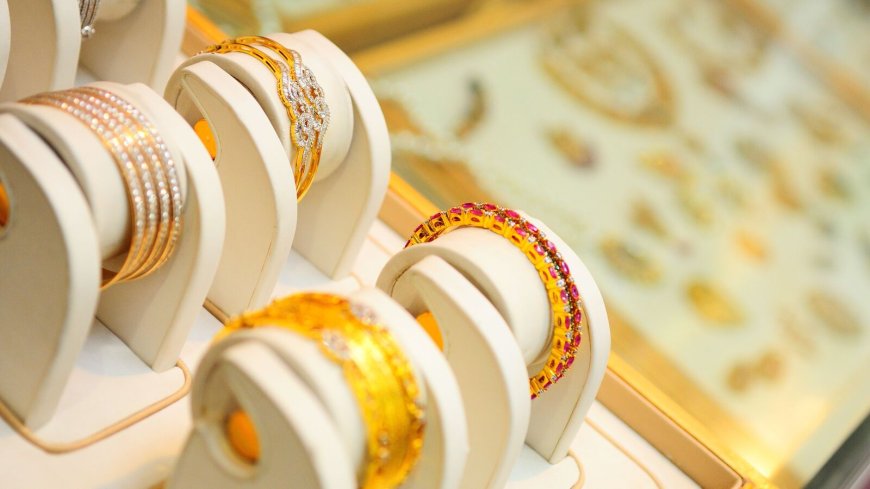Lalithaa Jewellery IPO: Is the Gold Rush Hiding Governance Glitches?
Lalithaa Jewellery’s ₹500 crore IPO shines with strong demand and financials, but governance concerns and related-party transactions raise caution for investors.

By Prasad Bhave | June 27, 2025
As Lalithaa Jewellery Mart Ltd opens its doors to public investors, excitement among retail and institutional investors is palpable. The South India-based gold retailer, known for its aggressive expansion and competitive pricing, is gearing up for its ₹500 crore initial public offering (IPO). However, amid the glittering projections and strong regional brand recall, some market observers have raised questions over corporate governance red flags and related-party transactions.
Could this be a classic case of investor enthusiasm overlooking structural weaknesses?
A Glittering Growth Story
Founded in 1985, Lalithaa Jewellery has carved out a strong presence across Tamil Nadu, Andhra Pradesh, Karnataka, and Telangana. The company operates 43 showrooms and is especially popular for offering lower making charges and flexible payment schemes — positioning itself as a value-centric player in the organized gold retail sector.
According to the draft red herring prospectus (DRHP) filed with SEBI, the proceeds from the IPO will be primarily used to fund expansion into northern and western India, refurbish existing showrooms, and repay a portion of its debt. The company reported a revenue of ₹5,153 crore in FY24 with a net profit of ₹212 crore, reflecting healthy growth momentum.
"Lalithaa's consistent profitability and its hold in semi-urban and rural markets make it a compelling player in the organized gold retail segment," said Priti Agrawal, Senior Analyst at WealthGrow Securities.
IPO Details
The ₹500 crore IPO comprises a fresh issue of shares worth ₹300 crore and an offer for sale (OFS) of ₹200 crore by promoter Kiran Kumar. The price band is expected to be announced shortly, and the company is aiming for a valuation of approximately ₹6,000 crore.
Grey market premium (GMP) activity suggests a robust demand, with shares reportedly trading at a ₹35–₹40 premium per share — a strong early indicator of listing gains. Subscription figures are expected to soar, especially from retail investors who recognize the brand from the South Indian wedding season circuit.
The Governance Underbelly
However, behind the sheen, analysts and governance watchdogs have flagged multiple concerns in the DRHP.
One of the most prominent red flags is the high volume of related-party transactions. Over the past three financial years, the company has conducted material transactions with entities owned by promoters, including lease agreements and gold procurement deals. While legal, such transactions can create opacity in financial reporting and raise questions on pricing fairness.
Additionally, the promoter shareholding concentration remains significantly high post-IPO, with the founder retaining over 78% of the equity. This limits the influence of independent shareholders and raises concerns over minority rights.
"Concentration of control and repeated related-party dealings are classic symptoms of weak corporate governance. Investors need to exercise caution and not get carried away by brand loyalty or IPO hype," warned Rajat Mohan, Partner at AMRG & Associates, a Delhi-based auditing firm.
Past Regulatory Run-ins
Another aspect that is causing concern is Lalithaa Jewellery's past encounters with tax authorities. In 2021, the company was subject to Income Tax raids related to undisclosed transactions, although no major penalties were levied. The management has disclosed the event in the DRHP but clarified that no material impact resulted from the investigation.
Still, some analysts feel that the recurring scrutiny could suggest deeper issues in compliance culture.
“Such legacy issues can resurface when least expected, especially post-listing when public scrutiny increases. Transparency and proactive disclosure are key,” noted Shalini Desai, corporate governance researcher at the Indian Institute of Management, Bangalore.
Gold Sector Tailwinds
Lalithaa’s IPO comes at a time when the Indian gold jewellery sector is experiencing a structural shift toward organized players. GST implementation, hallmarking regulations, and increasing customer trust in brand transparency have nudged traditional buyers toward chains like Tanishq, Kalyan, Malabar, and Lalithaa.
According to a report by CRISIL, organized jewellers’ market share is expected to rise to 45% by FY26 from 35% in FY22, supported by formal financing access and scalability advantages.
“From an industry standpoint, it’s the right time to enter the public market. Gold prices are stable, and wedding demand remains robust,” said Devansh Rana, retail sector expert at JM Financial.
Investor Outlook: Should You Subscribe?
For retail investors, the decision to subscribe boils down to a classic trade-off: brand strength and sectoral tailwinds versus governance risks and promoter dominance.
From a financial perspective, Lalithaa Jewellery appears to be a solid performer. Its revenue CAGR of 17% over the last five years and steady EBITDA margins above 9% signal operational efficiency. Return on equity (ROE) stands at an impressive 18.3% for FY24.
But the unanswered questions around governance can’t be ignored. There is also a risk that aggressive expansion plans, particularly into geographies where Lalithaa has little brand recall, may dilute margins or stress the balance sheet.
"Investors with a short-term listing gain objective might find the IPO appealing given the strong GMP. However, long-term investors should wait for a few quarters post-listing to assess management transparency and execution of expansion," suggested Mehul Shah, CIO, FinStride Capital.
Final Word
Lalithaa Jewellery's IPO is a reminder that not all that glitters is gold. While the fundamentals and sector timing are favorable, governance concerns warrant a closer inspection. Retail investors must weigh sentiment against substance — and remember that in capital markets, patience often yields better returns than blind enthusiasm.
What's Your Reaction?
 Like
0
Like
0
 Dislike
0
Dislike
0
 Love
0
Love
0
 Funny
0
Funny
0
 Angry
0
Angry
0
 Sad
0
Sad
0
 Wow
0
Wow
0













































































